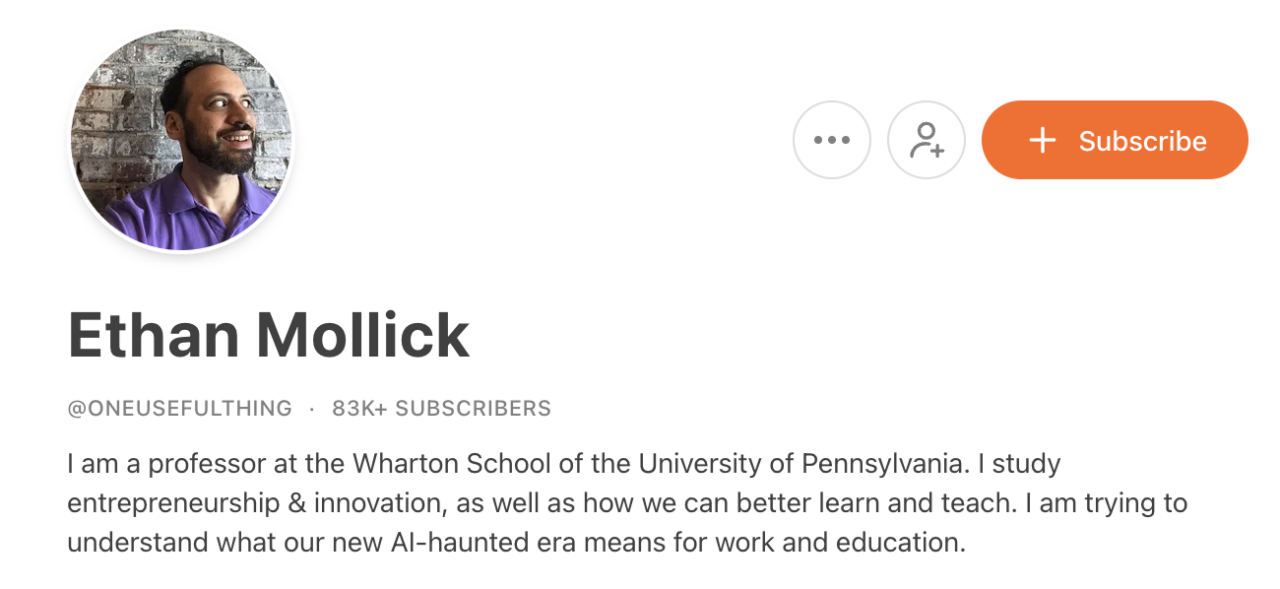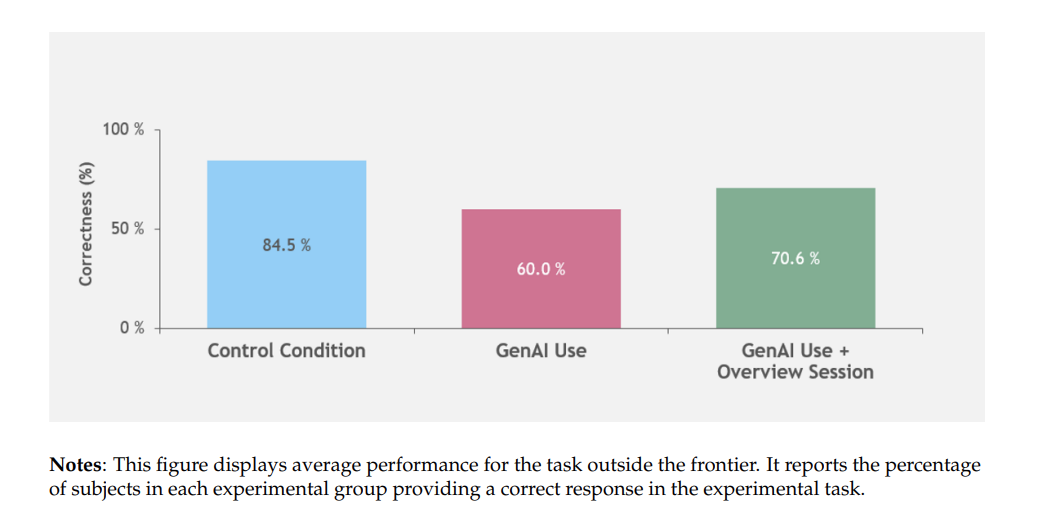AI vs human. Artificial intelligence is undoubtedly the theme word of 2023, which is evident by how much it has transformed the way companies do business. From helping develop marketing content to analyzing data, the use cases are constantly growing.
The reality we’re seeing is that artificial intelligence has clear strengths and weaknesses. But, when combined with human intelligence, together they can exceed what either could achieve on its own. And the best part is that AI is only getting more polished, meaning that the productivity we’re already seeing is ripe to expand.
In this post, we’re going to dig into a case study conducted by Boston Consulting Group (BCG), highlighting the benefits that AI can provide for productivity. Throughout the study, we’ll learn some concrete examples of the true applications of AI in business today
Recapping the AI vs Human Productivity Case Study
Conducted by Ethan Mollick and his team at BCG, the study delved deep into the world of AI and its effects on worker productivity.

The results are a mixed bag of surprises and confirmations, but one thing is clear: Understanding the metaphor of the “jagged technological frontier,” the term they used in the study, is key to leveraging AI in a beneficial manner for businesses.
Here are cliff note stats from the study:
- Consultants using AI completed 12.2% more tasks than if they weren’t using AI
- They also completed tasks 25.1% faster
- Their work was 40% higher in quality
With AI, productivity shot up, tasks were done more swiftly and the quality of the work improved significantly.
These are tasks that AI excels in. Drafting a compelling press release for a new shoe line? ChatGPT-4 has it covered. The consultant who used the AI tool for this purpose saved time and improved quality significantly, which is a win-win in any playbook.
Sounds great so far, right? Well, let’s pump the brakes a little.
Tasks that fall “outside the jagged frontier” are those where AI stumbles, like making strategic decisions based on multiple variables.
BCG designed a specific task “task that used the blind spots of AI to ensure it would give a wrong, but convincing, answer to a problem that humans would be able to solve.”
The results:
- Humans got the problem right 84% of the time without AI help
- Humans who used the AI only got the problem right 60-70% of the time

In short, AI isn’t the Swiss Army knife of consulting tools. It definitely has its limits.
Nuances Between AI vs Human Utility
Although AI is getting stronger, it still has its shortcomings and is by no means perfect. That’s not to say businesses should wait to adopt it. It’s a highly experimental technology that is already capable of alleviating the mundane activities of data analysis and creative processes.
People overestimate the competence of AI in the short run and underestimate its potential in the long run. In the present, AI isn’t a plug-and-play solution; it requires human intervention to operate seamlessly.
For example, ChatGPT, a language model-based chatbot, has an accuracy rate that falls short of 100%. Estimates suggest that it’s inaccurate about 20% of the time. But when humans step in to guide the process, the results are significantly better.
Three Forms of AI: Know the Difference
It’s essential to differentiate between the types of AI we’re currently working with. There are three main categories:
- Artificial Intelligence: Often referred to as General AI, it implies a form of intelligence where a machine has the ability to understand, learn and apply knowledge, reason through problems, have consciousness, and even have emotional understanding. Contrary to popular belief and marketing hype, we have yet to create machines that truly possess this level of intelligence.
- Augmented Intelligence: This form of AI is designed to assist and augment human capabilities rather than replace them. It works in synergy with human intelligence to improve decision-making, problem-solving and other cognitive tasks. The AI system provides computational power and analytical ability, while the human offers emotional intelligence, creativity and strategic oversight.
- Automated Intelligence: Designed for automating manual and cognitive tasks without human intervention, automated intelligence performs predefined functions, follows rules and operates within a set parameter of situations. It is often what we encounter in our daily use of technology, like chatbots, automated data analytics, Excel and Google Sheets, or software that can process an image and identify objects within it.
Most of the work we do today falls under the second and third categories — augmented or automated intelligence. They help augment human decision-making or automate repetitive tasks but don’t replace human intelligence entirely:

That’s where a human component is still essential for AI outputs to thrive.
Use Cases of AI in Marketing
The question here lies in how all of this theory applies to real-world marketing scenarios. Let’s look at a couple of examples.
Automated Data Analysis
One simple way to employ AI is to analyze your data. Google Analytics 4, for instance, is weaving automated reports and recommendations natively in the platform, helping marketing analysts carve through all the chaff and get to the metrics that need the most attention. In that way, marketers can easily identify areas where they’re overspending and underperforming in their ad campaigns.
Once flagged, a human team member can review and adjust accordingly. Given the billions of dollars spent on advertising each year, even minor optimizations can result in substantial savings.
Programmatic SEO
Another application is using AI to assist in Search Engine Optimization.
Programmatic SEO is the use of software or automated processes to generate, optimize and manage large volumes of web content and web pages to better rank in search engines.
For instance, through topical mapping – a method used to visually represent or organize information based on specific topics or themes to make complex information more understandable – AI can scrape through mountains of data to identify core topics and their related sub-topics that your audience cares about.
It can create a web of interlinked subjects, helping you understand not just which primary keywords to target, but also the secondary and tertiary phrases that can add layers of richness to your content. You can think of it as AI laying down the skeletal structure of a content plan, pointing you in the direction where human creativity can flesh it out.
The Future Is Augmented
It’s clear that the future of professional work lies in AI augmentation to human inputs. We can start moving away from this whole “AI vs Human” position and instead start looking at how AI works with humans.
Businesses that understand this and implement it correctly will reap massive benefits in productivity and quality.
While the AI technology of today may require a human touch to reach its full potential, the long-term prospects are astounding.
So, if you’re like us, then you, too, are eagerly anticipating the fullest potential we can wield with AI in marketing.
Now go forth and automate!
If you’re ready to level up your content with AI tools, Single Grain’s AI experts can help!👇
For more insights and lessons about marketing, check out our Marketing School podcast on YouTube.






